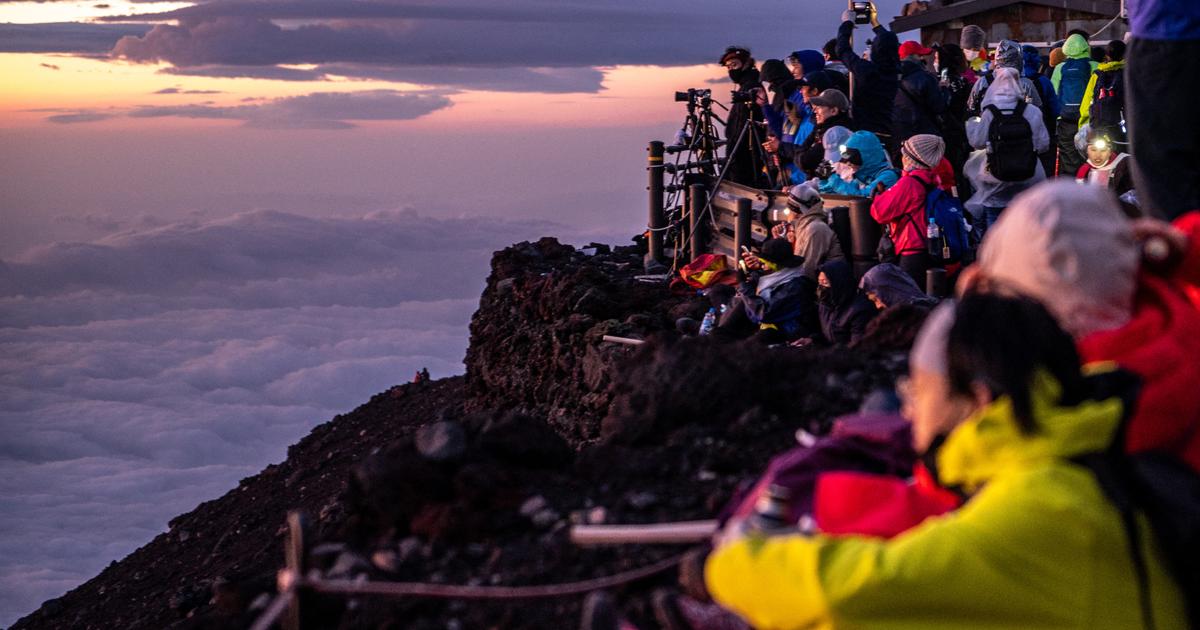It is one of the symbols of Japan, and also one of the sites most affected by overcrowding.
From July 1, 2024, to climb Mount Fuji, you will have to pay a tax, the amount of which should be revealed at the end of February.
The number of hikers will also be limited to 4,000 per day on the Yoshida trail.
In 2023, among the 221,322 tourists to have climbed the highest point of the country (3776 m), half took this route reputed to be the easiest, the most accessible from Tokyo and the best equipped with facilities and refuges.
To discover
Travel to Japan: tailor-made tours, hotels and stays from our partners
Another measure: hikers will not be able to take any trail between 4 p.m. and 2 a.m.
Usually, many of them begin their ascent at the end of the day or even in the middle of the night in order to arrive at the summit before sunrise.
However, venturing on the trails in complete darkness without sleeping in shelters presents security risks, points out the government of Yamanashi prefecture in the
Asahi
newspaper .
Also read: Incidents, litter and dirty toilets: Mount Fuji is in danger
Japan's summit is drowning in waste
Mount Fuji is only accessible two months a year via several trails, the most popular of which is Yoshida.
PHILIP FONG / AFP
With this new regulation, the authorities want to protect the environment of the UNESCO-listed site.
While the access routes are only accessible for two months of the year (generally from early July to early September), Mount Fuji experiences an accumulation of waste.
Currently, hikers are invited to donate 1,000 yen (€7) to help maintain the site, but very few do so.
Starting this summer, agents will be responsible for collecting the tax at the entrance to the trails.
While it welcomed 25 million travelers in 2023, the Japanese archipelago expects to return to its 2019 attendance levels this year. And the country fears the harmful effects of this influx, both on the environment and on the daily life of the Japanese, increasingly annoyed by incivility.
Japan is starting to implement a fee at the entrance to several particularly visited sites.
Thus, since October 1, 2023, visitors to the Itsukushima shrine, known for its red torii (
traditional Japanese gate, editor's note
), must pay a tax of 100 yen (€0.63) which is added on the entry ticket.
The waste problem affects many other mountain peaks around the world.
In France, mountaineers heading towards the summit of Mont Blanc must have a reservation in one of the normal route refuges.
Their number is therefore limited to 214 per day.
In the Himalayas, tents, oxygen bottles and plastics of all kinds have been accumulating for decades, transforming the summit of the world into an open-air dump.
A situation which has just pushed a team of French mountaineers to bring down several tonnes of this waste.
ON VIDEO
- Tourism: Japan welcomes a record number of travelers in December 2023

